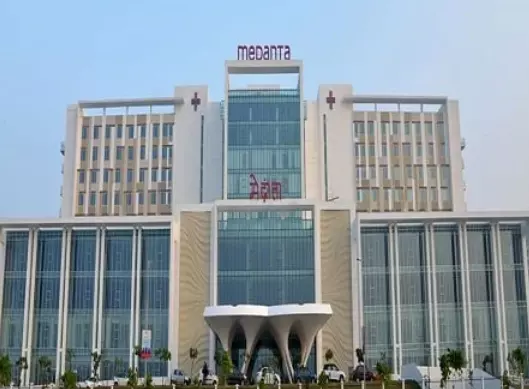
Hypertension is the major causes of cardiovascular morbidity and mortality among aged and elderly population in India.
When it comes to the number of older adults who have high blood pressure (hypertension), there is a huge difference between rural and urban areas in India. Partly due to lack of awareness about hypertension among villagers, rate of diagnosis of the condition is lower in rural India compared to urban India. Moreover, lack of skilled health workers and equipment makes it difficult to control of hypertension in rural India.
To better understand the challenges in diagnosis and management of hypertension in rural areas, we connected with Shyamal Santra, Public Health & Nutrition Expert at Transform Rural India. Excerpts follow:
Q1. How is rural India dealing with hypertension compared to urban India?
Hypertension is an important public health concern and the major causes of cardiovascular morbidity and mortality among aged and elderly population in India. As per the recent National Family Health Survey-5, the prevalence of Hypertension among women in rural areas is 20.2 per cent and 22.7 per cent in men in rural area. This draws attention towards the diagnosis and treatment of hypertension. In spite of the Government of India’s non communicable disease control programmes, we have failed to increase the screening of Hypertension. Even after any patient is diagnosed with hypertension, the continued follow-up consultation is still a big challenge, which may lead to bigger challenges.
Q2. Why is there a stark difference in hypertension diagnosis between rural and urban India?
There are many barriers attributed to the low diagnosis of hypertension in rural India. The barriers can be seen in three categories: individual level, health system level and social determinants level. At Individual level, it is largely determined and influenced by the awareness level and sometimes the willingness for diagnosis of current physical condition. In a few cases, the fear of detection itself creates a psychological barrier in seeking diagnostic services. The System level barriers can be influenced by the knowledge and skill sets of health workers, availability of equipment as well as required supplies. In many cases, advanced techniques and Point of Care technologies are not adopted at ground level. The Social determinants like geographical locations, age and other factors also play a critical role.
Additionally, the public health programmes are mostly focused on reproductive age groups with emphasis on Maternal and Child Care leaving a large number of adults outside the ambit of targeted interventions.
Q3. Why are the major challenges in controlling hypertension in rural India?
While the diagnosis itself is challenging, receiving treatment is also challenging in rural India. Treatment of hypertension is influenced by age, distance to healthcare and socioeconomic position (SEP). At the health system level, treatment may be influenced by knowledge and implementation of current treatment initiation guidelines and availability of medicines. In rural India, the public health system has its own challenges; and unlike the urban areas the presence of trained private sector service providers is negligible. People are dependent on ‘Quacks’ who are not aware, non-trained and non-equipped with recent protocols.
The control of hypertension is influenced at individual level by adherence to medication, health literacy, adopting healthy behaviours and modifying lifestyles, and understanding of the chronic disease and its risk factors such as physical activity and tobacco use. In rural India, such mechanism for influencing the behaviours have not systematically adopted yet, particularly for male members.
Q4. What roles community-based healthcare services can play to address these issues?
Poor knowledge and awareness of hypertension coupled with the unavailability of medical care facilities as well as services lead to poor control of hypertension in rural India. In such a situation, community-based healthcare services and programmes can be a possible solution in low resource settings. The combined efforts of Community Health Workers such as ASHA (Accredited Social Health Activist), Women Collectives (SHGs), supported by the local elected representatives i.e. Panchayati Raj Institutions and ANMs can provide necessary health advices, necessary basic level of testing and peer support for adopting healthy behaviours.
The initiatives need to be focused on the most excluded, vulnerable and hard-to-reach population to expand comprehensive healthcare services at the community and household level, leveraging flagship programmes of union and state governments. Taking a cue from similar earlier experiences in RMNCH+A, an integrated approach should be taken to ensure continuum of care for each of the targeted population as well as family members for expanding comprehensive primary care including hypertension. This will maximize local stakeholders’ involvement, encourage scale-up of affordable packages of essential healthcare services involving the beneficiaries through existing community support groups (SHG-VO-CLF; Jan Arogya Samiti, Village Health Nutrition Community) to maximize impact.
Further, the integration of Gram Panchayat Development Plan and Village Health Plan will not only increase access to health care but also promote ownership and empowerment of target communities along the continuum of care, strengthen joint accountabilities and promote sustainable and locally rooted solutions. Key strategy for this has to strengthen network of community groups i.e. to amplify voice, constructive persuasion, negation and effective communication within and outside the communities to build the necessary synergy with the frontline health system, while promoting mutual beneficial relationships for health service delivery at multiple levels.
As an integral part of the strategy, strengthening outreach services using platform like Village Health and Nutrition Days (VHSNDs) backed by consultation through telemedicine services should be activated to build the trust of people on public health services.
Total Wellness is now just a click away.
Follow us on









